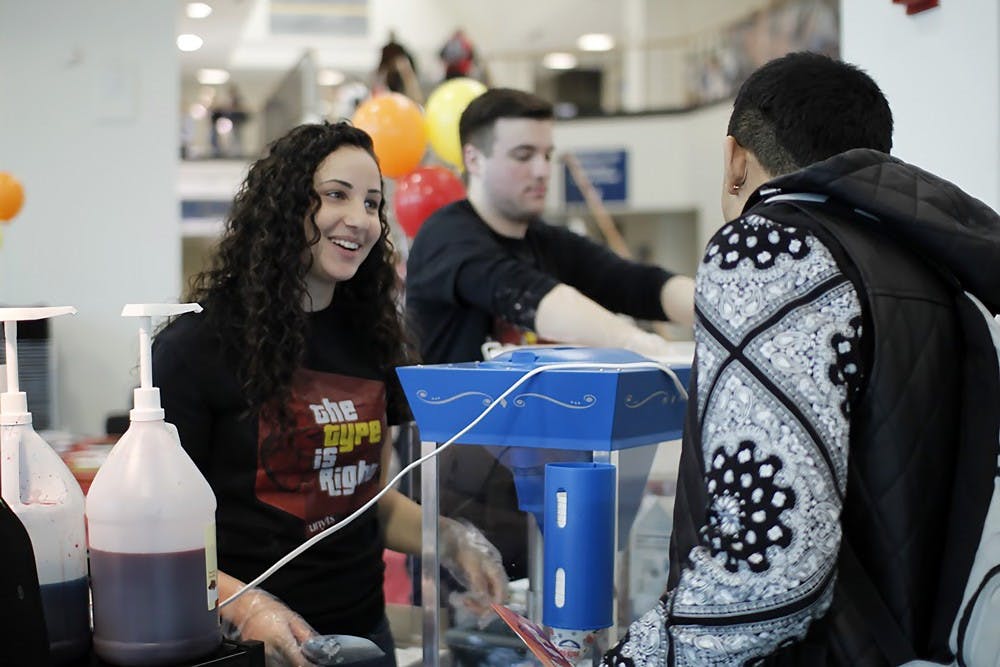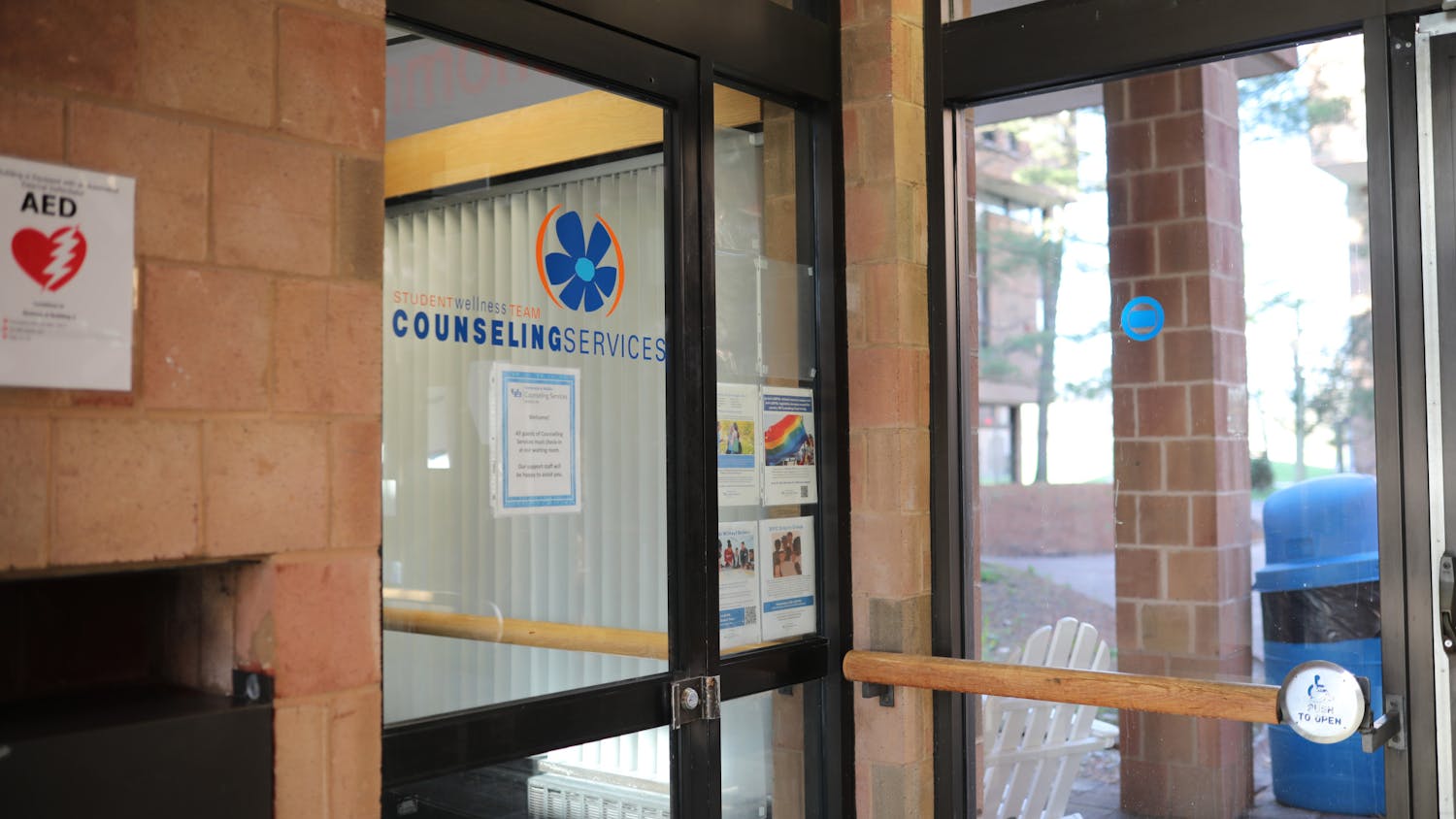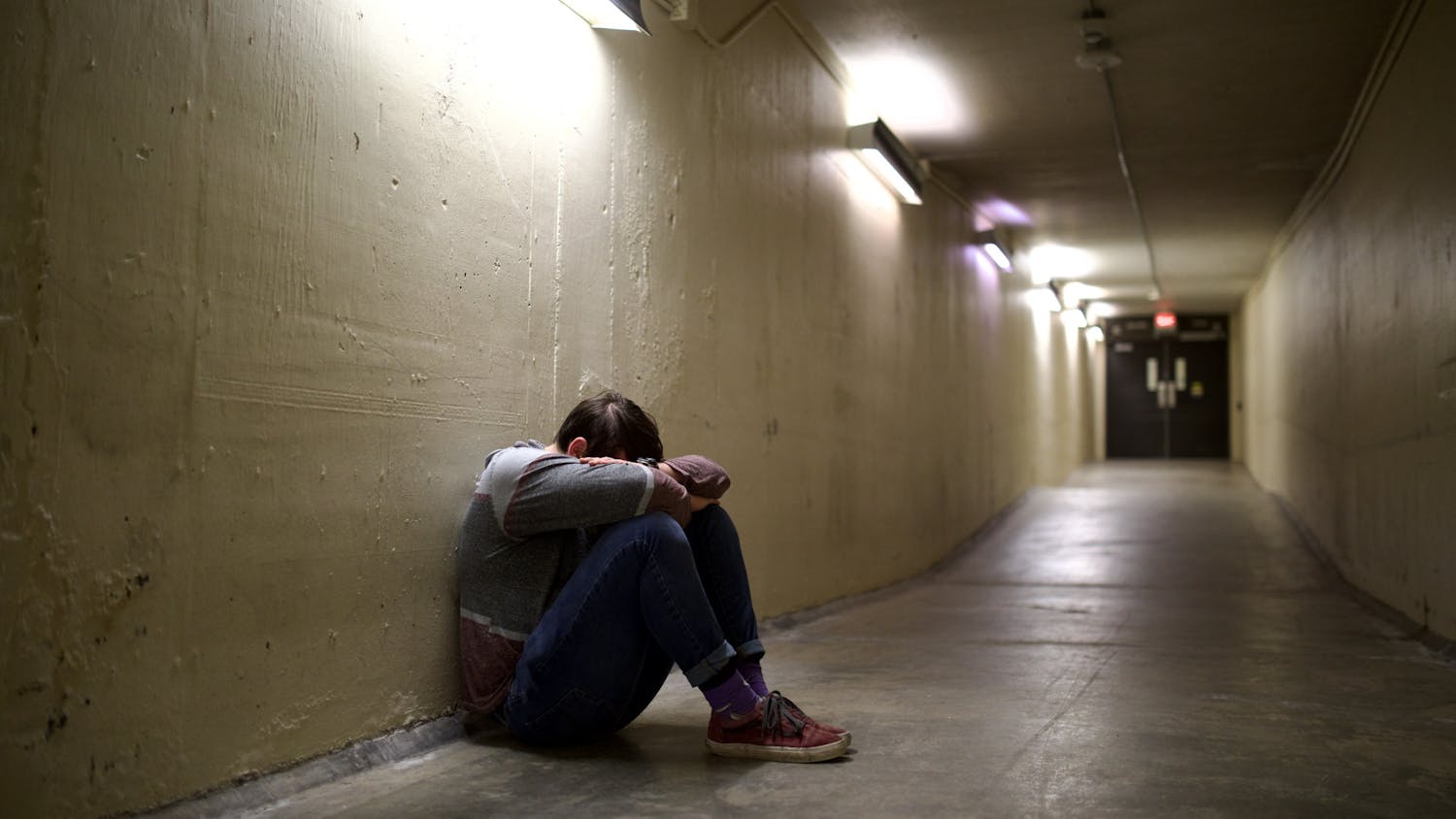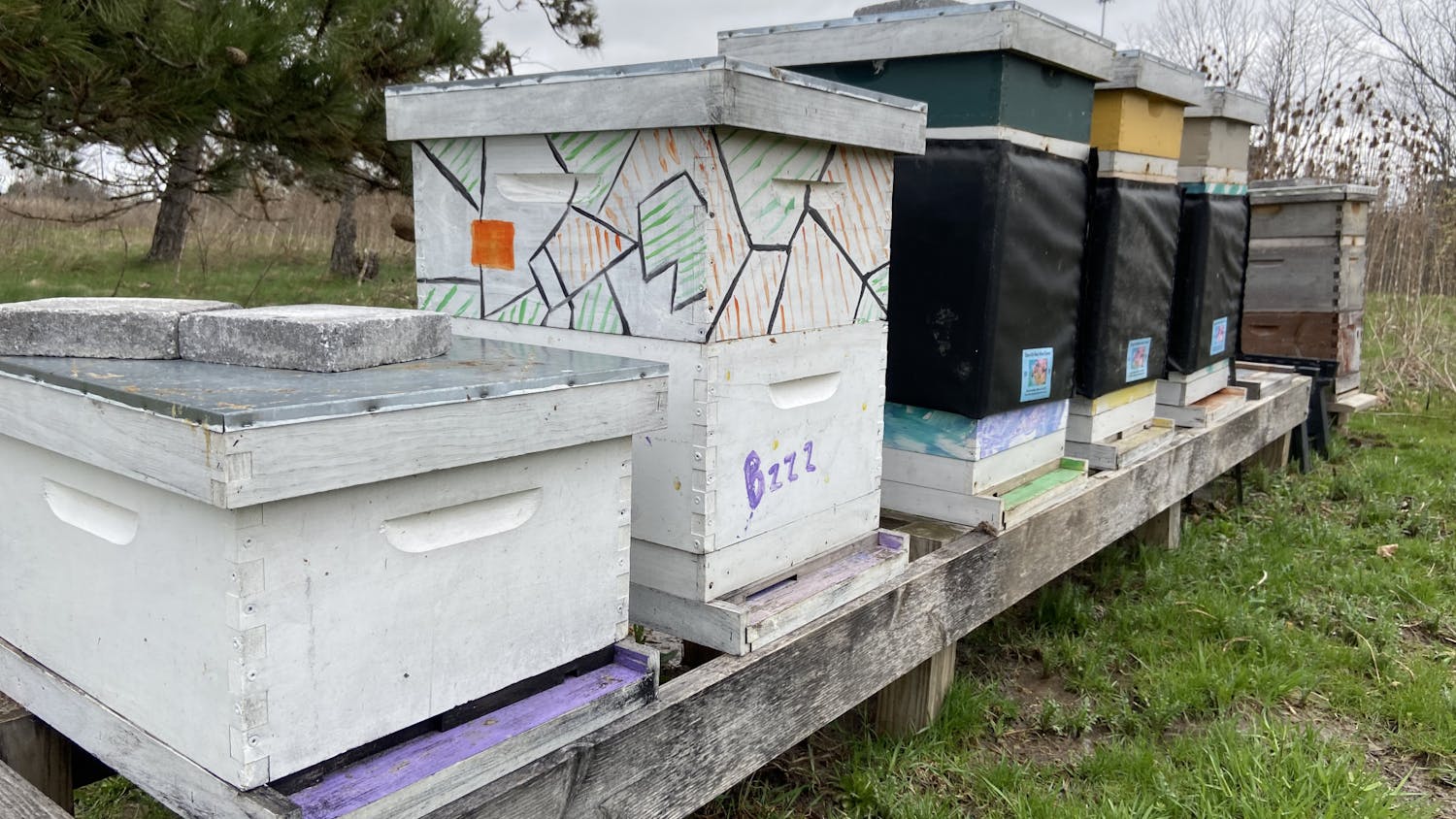About 18 people will die today waiting for an organ donation, based on a national average provided by Upstate New York Transplant Services, or UNYTS. Karen Swierski, an adjunct professor of communication at UB, and her class hope to lower that number.
Last Wednesday, Swierski and her advanced public relations class, COM 453, held an event aimed at helping current and future patients waiting for organ donations. Since 2009, UNYTS has sponsored an event hosted by Swierski’s class to raise awareness about the need for organ and blood donors. This year’s event was called “The Type is Right,” inspired by the popular television game show “The Price is Right.” Students in the class invited people to be contestants in the game but in order to win, the participants needed to learn something about being a donor.
Organ donation education is the first step toward making a difference, according to Swierski.
“[The process] starts here on campus,” she said. “When students are educated [about organ donation] early on, they will go on and educate others.”
The event included games like Plinko, balloon darts and a prize wheel. Questions and information about donation were weaved within each of them.
There were refreshments for the students in attendance, as well as the opportunity to win door prizes and receive a free monster energy drink if you signed up to be a donor. At the event, 107 people signed up to become organ donors.
Last year’s awareness event resulted in almost 700 new donors. Over the seven years the class has held the awareness event, 2,500 people have signed up to be donors. The process is as easy as filling out a simple enrollment form and sending it to UNYTS, Swierski said.
Approximately 74 organ transplants take place every day in the United States, and on average 118 people are added to the nation’s organ transplant waiting list each day, one every 11 minutes, according to UNYTS.
Swierski learned how important donors are first hand.
Her brother spent five years on dialysis while awaiting a kidney transplant. During this time, Swierski describes her brother as being “a mess.”
“Three days a week [my brother] had to sit in a chair for four hours hooked up to dialysis; he was completely confined,” Swierski said. “Kidneys are supposed to pull the toxins out of your body, so being unable to do that unless hooked up to dialysis, [my brother] was not doing well. He couldn’t go anywhere.”
One night, Swierski woke up to a call from her brother. He called because he needed a ride to the hospital the next day. After five years of waiting, he was going to get a kidney.
Since that late night phone call, Swierski said her brother’s life has transformed.
“[The kidney transplant] has given me my brother back,” Swierski said. “He has his energy back, his sense of humor, he’s lost weight and he has a new girlfriend. There is no greater gift.”
Swierski’s personal experience with organ donation has given her an increased appreciation for UNYTS and its partnership with the class.
Kristin Waldby, a junior sociology and communication major, is one of the many students who view the class as a “great opportunity.”
While raising awareness of the need for organ donors, the class has given students the opportunity to set up a real public relations campaign. UNYTS gave the class a real budget to set up the event, and at the end of the semester they give the class a presentation on how they did and how they could’ve improved, Waldby said.
“UNYTS is really invested in raising awareness in the college demographic,” Waldby said. “It’s almost taboo thinking about donating our organs at this age. We think, ‘you know I’m young, I’m not dying anytime soon, why would I be an organ donor?’ Raising awareness helps to take away that taboo.”
Swierski recalls being at a Sabres game and discovering the lady sitting by her was involved in her brother’s transplant process. The woman was an organ donor. Many organ donors are from families grieving their own past loved ones, she said. She was so excited to finally meet a recipient that the woman began to cry.
“[The students in the class] are saving lives of real people,” Swierski said. “I often explain this to them using the example of throwing a pebble into the water and all the rings that are formed and go out into the water around it.”
Organizing this awareness event was like throwing that pebble into the water and watching the rings in its wake spread all over the world, Swierski said.
Sophia McKeone is a features staff writer and can be contacted at features@ubspectrum.com





